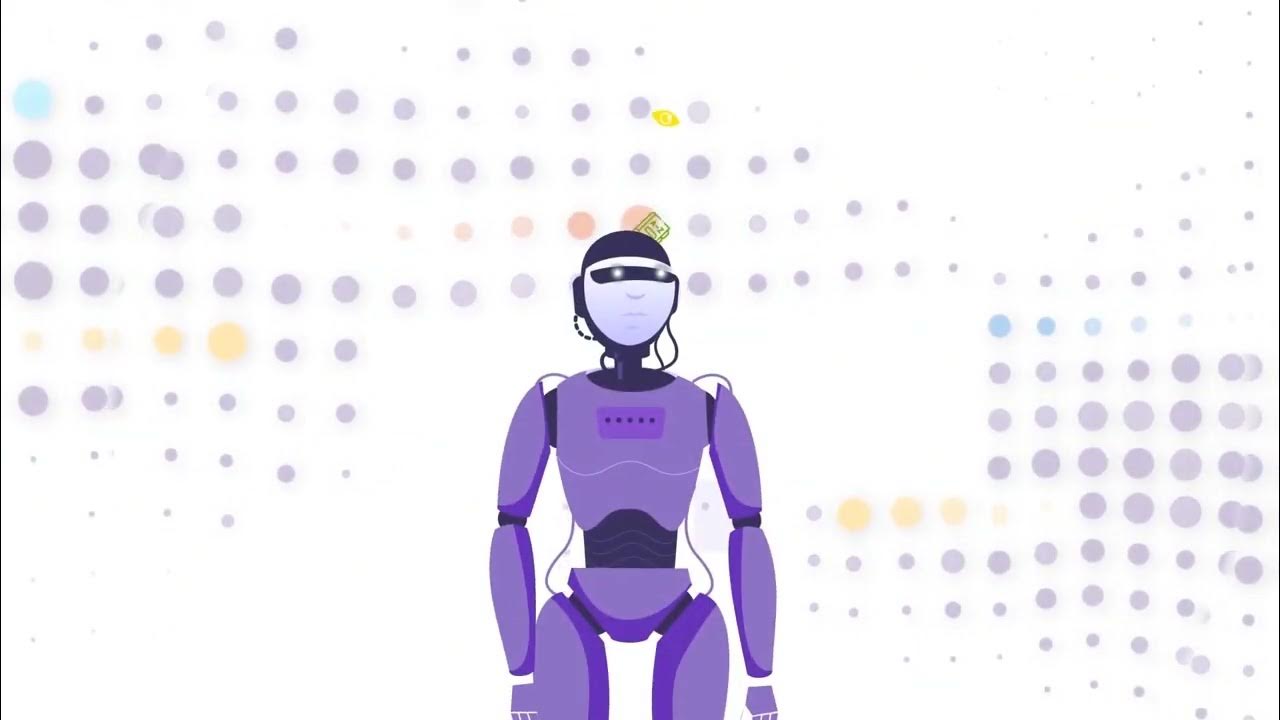Lesson 2 – Intro to Cognitive Services
Summary
TLDR视频脚本介绍了一个三步AI开发流程,强调了数据收集的重要性,并以医疗领域为例,探讨了如何利用微软认知服务中的API(如面部识别、计算机视觉、语音转文本和翻译API)来解决医院候诊室等待时间长的问题。通过这个例子,脚本展示了如何选择合适的API来帮助AI收集和处理数据。
Takeaways
- 🧠 人工智能(AI)的基础是数据收集,模仿人类通过视觉、听觉等感官接收信息。
- 🛠️ 微软开发了认知服务工具,帮助开发者将数据输入AI系统。
- 🔍 认知服务分为五个类别:视觉、语音、语言、搜索和决策。
- 🔧 每个类别下都有APIs(应用程序编程接口),用于构建AI系统。
- 🏥 通过创新AI应用,例如AI在医疗领域的应用,可以解决实际问题,如医院候诊室的长时间等待。
- 👁️ 使用面部识别和计算机视觉APIs来分析病人的面部信息。
- 🗣️ 利用语音转文本APIs来获取病人描述自己病情的语音信息。
- 🌐 为了提高包容性,可以使用翻译API来理解不同语言的病人。
- 📝 AI开发第一步是确定我们希望找到和接收的数据类型以及我们将使用的APIs。
- 🔥 通过结合不同的APIs,可以开始确定AI如何收集数据。
- 🚀 创新AI应用能够提高效率,改善服务,如通过AI医院入口系统来检查病人并评估病情。
Q & A
人工智能的第一步是什么?
-人工智能的第一步是确定我们希望收集的数据,这是构建AI的基础。
微软开发的工具集名称是什么?
-微软开发的工具集称为微软认知服务(Microsoft Cognitive Services)。
微软认知服务包含哪五个类别?
-微软认知服务包含五个类别:视觉(Vision)、语音(Speech)、语言(Language)、搜索(Search)和决策(Decision)。
API代表什么意思?
-API代表应用程序编程接口(Application Programming Interface)。
在构建AI时,API的作用是什么?
-API在构建AI时的作用类似于建房子时使用的工具,如锤子和锯子,它们是构建AI不可或缺的工具。
如何使用API来解决医院候诊室等待时间长的问题?
-可以通过构建一个AI医院入口系统,使用面部识别和计算机视觉API来检查患者状况,使用语音转文本API来接收患者描述的病情,以及使用翻译API来理解不同语言的患者。
为什么在AI医院入口系统中要使用面部识别API?
-使用面部识别API可以帮助从患者的面部捕捉到一些关键信息,比如可能的健康问题或情绪状态。
语音转文本API在AI医院入口系统中扮演什么角色?
-语音转文本API可以将患者口头描述的病情转换成文本信息,便于AI系统分析和处理。
为什么AI医院入口系统可能需要翻译API?
-翻译API可以帮助AI系统理解并服务于使用不同语言的患者,提高系统的包容性和可用性。
在AI开发过程中,如何确定要使用哪些API?
-在AI开发过程中,需要根据希望解决的问题和所需收集的数据类型来确定使用哪些API。
为什么说微软认知服务使得AI开发变得更容易?
-微软认知服务提供了一系列的API工具,这些工具可以帮助开发者更容易地将数据集成到AI系统中,简化了开发过程。
Outlines
🤖 AI开发入门:数据收集与微软认知服务
本段介绍了AI开发的基础过程,强调了数据收集的重要性。类比人类通过感官接收信息,AI也通过类似的方式获取数据。微软的认知服务(Microsoft Cognitive Services)为AI开发者提供了便利,包括五个类别:视觉、语音、语言、搜索和决策。这些服务通过APIs(应用程序编程接口)实现,类似于建筑工具。通过一个创新的AI医疗概念案例,展示了如何选择合适的APIs来收集数据,例如面部识别、语音转文本和翻译APIs,以解决医院候诊室等待时间长的问题。
Mindmap
Keywords
💡人工智能
💡数据收集
💡微软认知服务
💡APIs
💡面部识别
💡计算机视觉
💡语音转文本
💡翻译API
💡健康领域
💡医院入口系统
💡决策
Highlights
我们的AI三步过程从我们希望收集的数据开始。
人类通过看、读、计数或听来收集数据,AI也尝试以类似的方式接收数据。
微软开发了帮助我们向AI输入数据的工具,称为微软认知服务。
微软认知服务分为五个类别:视觉、语音、语言、搜索和决策。
这些类别中包含的工具称为API(应用程序编程接口)。
构建AI时需要API,就像建房子需要锤子和锯子一样。
第一步是确定我们试图找到和接收的数据,以及我们将使用哪些API来实现这一目标。
通过创造一个AI概念来解释这一点,我们将在AI健康类别中进行创新。
我们要解决的问题是医院候诊室的长时间等待。
如果我们正在构建一个AI医院入口系统,用于检查患者并评估他们的状况,我们将使用面部和计算机视觉API。
我们可能还会使用语音转文本API来接收患者谈论他们状况时说的话。
为了提高包容性,我们可能还会使用翻译API来理解不同语言的患者。
这是一个良好的开端,你可以看到如何轻松地引入不同的API来开始确定我们的AI将如何收集数据。
第一步完成。
Transcripts
[Music]
our one two three step ai process begins
with the data that we're hoping to
collect with our ai
as humans we see things or read things
or count things or hear things and every
time we are taking these actions we're
bringing data into our brain
what we are attempting to do with ai is
to have a machine
robot website
app or other piece of technology
take in data in a similar way the great
thing that makes this a lot easier for
you as up-and-coming ai developers
is that microsoft has developed tools
that help us get this data into our ai
they are called the microsoft cognitive
services and there are five categories
of them
there is vision where technology is
trying to see things
speech where technology is trying to
hear and say things
language where technology is trying to
understand and use different languages
search where technology is scanning data
sets and decision where technology is
trying to do something with everything
it's just learned
within these categories are the tools
called apis
that stands for application programming
interface but to keep things simple
we'll just refer to them as apis
these are tools and just like when you
build a house you need tools such as a
hammer and a saw
when you are building an ai you need
these apis
now with step one of our one two three
step process
all we're asking is
what data are we trying to find and
receive and what apis are we going to
use to help us achieve that
let's explain this by inventing an ai
concept right now
we will innovate in the ai for health
category and the problem we want to
solve
is long delays in hospital waiting rooms
so perhaps if we were building an ai
hospital entry system that was checking
in patients and assessing their
conditions
from the vision cognitive services we
would definitely want to use the face
and computer vision apis
because there may be some things we can
pick up from the faces of our patients
we may also want to use the
speech-to-text api to be able to receive
what the patients say when they talk
about their condition
and maybe to improve inclusion we may
also use the translator api so we can
understand patients in a range of
different languages
that's a pretty good start and you can
see how easy it was to bring in
different apis to begin to determine how
our ai will collect data
step 1 done
5.0 / 5 (0 votes)






